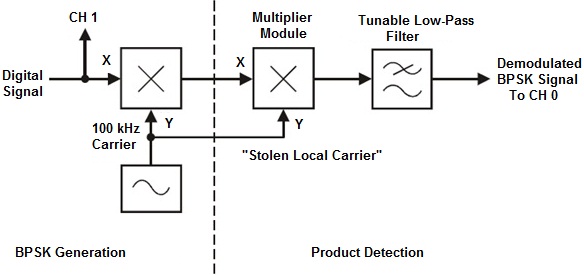Amplitude Shift Keying Generation And Detection Theory
- Amplitude Phase Shift Keying
- Amplitude Shift Keying Matlab
- Amplitude Shift Keying Generation And Detection Theory Test
- Amplitude Shift Keying Ppt
Frequency Shift Keying (FSK) is the digital modulation technique in which the frequency of the carrier signal varies according to the digital signal changes. FSK is a scheme of frequency modulation. The output of a FSK modulated wave is high in frequency for a binary High input and is low in frequency for a binary Low input. 62 - D1 FSK - frequency shift keying asynchronous A close look at the waveform of Figure 1 reveals that it is the sum of two amplitude shift keyed (ASK) signals. These signals were examined in the experiment entitled ASK - amplitude shift keying in this Volume. The receiver of Figure 3 takes advantage of this. The FSK signal has been separated.
- Digital Communication Tutorial
- Digital Communication Resources
- Selected Reading
Amplitude Shift Keying (ASK) is a type of Amplitude Modulation which represents the binary data in the form of variations in the amplitude of a signal.
Any modulated signal has a high frequency carrier. The binary signal when ASK modulated, gives a zero value for Low input while it gives the carrier output for High input.
Pixel art fan? Win big against progressively tougher opponents from all over the planet.BECOME A CUE COLLECTOR MASTER Steampunk? Find your perfect cue! Pool live tour online generator activation key free. Unlock more powerful cues as you level-up, then show off to your friends and opponents.Join millions of players now — hit the install button and play the most extraordinary pool game ever created! Choose from over 50 cues like the simple-but-crazy Broom stick to a beautiful masterpieces such as the Dragon.

The following figure represents ASK modulated waveform along with its input.
To find the process of obtaining this ASK modulated wave, let us learn about the working of the ASK modulator.
ASK Modulator
Amplitude Phase Shift Keying
The ASK modulator block diagram comprises of the carrier signal generator, the binary sequence from the message signal and the band-limited filter. Following is the block diagram of the ASK Modulator.
The carrier generator, sends a continuous high-frequency carrier. The binary sequence from the message signal makes the unipolar input to be either High or Low. The high signal closes the switch, allowing a carrier wave. Hence, the output will be the carrier signal at high input. When there is low input, the switch opens, allowing no voltage to appear. Hence, the output will be low.
The band-limiting filter, shapes the pulse depending upon the amplitude and phase characteristics of the band-limiting filter or the pulse-shaping filter.
ASK Demodulator
There are two types of ASK Demodulation techniques. They are −
- Asynchronous ASK Demodulation/detection
- Synchronous ASK Demodulation/detection
The clock frequency at the transmitter when matches with the clock frequency at the receiver, it is known as a Synchronous method, as the frequency gets synchronized. Otherwise, it is known as Asynchronous.
Asynchronous ASK Demodulator
The Asynchronous ASK detector consists of a half-wave rectifier, a low pass filter, and a comparator. Following is the block diagram for the same.
The modulated ASK signal is given to the half-wave rectifier, which delivers a positive half output. The low pass filter suppresses the higher frequencies and gives an envelope detected output from which the comparator delivers a digital output.
Amplitude Shift Keying Matlab
Synchronous ASK Demodulator
Amplitude Shift Keying Generation And Detection Theory Test
Synchronous ASK detector consists of a Square law detector, low pass filter, a comparator, and a voltage limiter. Following is the block diagram for the same.
Amplitude Shift Keying Ppt
The ASK modulated input signal is given to the Square law detector. A square law detector is one whose output voltage is proportional to the square of the amplitude modulated input voltage. The low pass filter minimizes the higher frequencies. The comparator and the voltage limiter help to get a clean digital output.